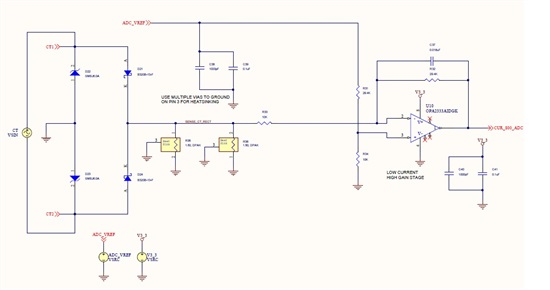I am facing an issue with TI TINA simulation software. I have OPA2333 on current sensing and amplification circuit and I want to simulate it before implementing the same.
The below attached excel sheet will give the idea what is expected voltage on the OPA2333 op-amp output. But when I simulate in TINA the output oscillating on 3.3V.
6403.VT-III Current Sense Issue.xlsx
I have tried with altium designer mixed sim also but altium is giving me timestep too low error when I add op-amp to circuit. Without that it is working ok but no use.Circuit image of altium is attached below.
Please help me to solve this issue..


